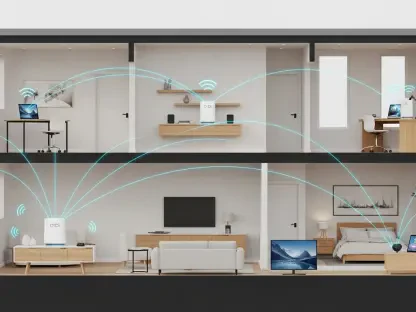Over the past decade, the telecommunications industry has become the nervous system of the digital economy. Enterprises no longer simply buy “connectivity”—they rely on their communications partners to enable remote work, customer interactions, data analytics, and global collaboration.
The rise of cloud computing and the Internet of Things (IoT) means that telecom providers are intertwined with almost every business process. Yet B2B customers are often frustrated by the very companies they depend on. A recent survey of 1,000 organizations across 11 sectors found that only 27% of leaders say their telecom provider currently delivers exceptional customer experience (CX).
Even more telling, half of the organizations would be willing to pay a premium for better CX. In another industry report, executives warned that commoditization of connectivity is eroding margins and that CX is emerging as the primary competitive differentiator. In other words, the client’s experience is becoming as important as the network itself.
This editorial explores what enterprise customers really want from their telecom providers and how operators can transform the experience across the entire journey.
Building the Foundation for Trust
For many enterprise buyers, the journey begins with a tender, a proposal, and a long contract filled with jargon and options. Telecom services are complex; they involve physical infrastructure, spectrum rights, and regulatory obligations. Unfortunately, complexity often spills over into the buying experience.
In Capgemini’s B2B Pulse study, seven in ten organizations said they want their telecom partners to simplify procurement. Fifty-one percent of organizations reported that the buying process is complex and believe providers should make it easier, while only 22% are satisfied with lead times. Complexity delays deployment, increases costs, and erodes trust at the very beginning of a relationship.
To build a foundation of trust, telecom providers must overhaul how they design, price, and manage contracts. First, they should shift toward outcome‑based agreements that focus on business results rather than bandwidth or minutes. Clear service level agreements (SLAs) tied to uptime, latency, and responsiveness help to align expectations and reduce disputes. The same Capgemini survey highlighted that more than seven in ten organizations prioritize network performance and reliability, but only around one in three are satisfied with these aspects. Transparent SLAs can narrow this gap.
Second, procurement should be digitized and self‑service oriented. Buyers expect consumer‑grade experiences: online product discovery, automated proposals, electronic signatures, and real‑time order tracking. Simplification isn’t just a convenience; it is a willingness-to-pay factor. A separate study from Amdocs noted that 64% of people are willing to pay more for simpler experiences. By investing in automation and configurable offers, providers can reduce the number of touchpoints, shorten lead times, and make pricing more transparent.
Third, contracts need to be flexible and modular. Enterprises often expand into new markets, add sites, or shift workloads to different clouds. Lengthy, rigid contracts that lock customers into specific capacities or technologies are at odds with agile business models. Providers can offer modular service blocks that customers can scale up or down without renegotiating the entire agreement. Subscription‑based models or pay‑as‑you‑grow options are already common in cloud software and can be adapted to telecom.
Simplifying the contract experience signals that you understand the pace of business and are ready to partner for the long term. This simplification lays the groundwork for the deeper solution‑centric partnerships enterprises now expect.
Solution‑Centricity and Ecosystem Integration
Once the paperwork is signed, enterprise customers expect more than a vendor who delivers circuits. They want a strategic partner who understands their industry and co‑creates solutions. Around three in five organizations expect telecom providers to better understand their market. Sixty-seven percent want providers to offer the most effective solution for their specific needs. Yet there is a stark gap between the importance of SLAs and network reliability and satisfaction with them. Business customers are, therefore, looking for partners who can orchestrate outcomes and take accountability beyond connectivity.
Solution‑centricity requires telecom operators to move beyond product silos. They must assemble vertical solutions that integrate connectivity, security, collaboration tools, cloud services, and analytics. For example, a manufacturing company deploying IoT sensors will require low‑latency connectivity, edge computing, secure network slices, and a dashboard that translates data into actionable insights. Rather than selling these components separately, a solution‑centric provider bundles them into an integrated offering with a single point of accountability.
When enterprises see their telecom provider as a solution orchestrator and co‑innovator, they begin to look beyond price.
Delivering Seamless, Omnichannel Support
When issues arise or when customers want to upgrade, the quality of support often determines whether they become loyal advocates or vocal detractors. Unfortunately, many telecom operators still operate on legacy platforms and siloed processes. Amdocs’ research reveals that 49% of communications service providers (CSPs) are struggling to compete with leaner, more agile entrants due to price and operational efficiency pressures.
Two of the top three IT priorities for telecom companies are automating operations and simplifying IT systems. Moreover, 86% of CSPs find it extremely challenging to update their current customer or digital experience platforms, and 82% of respondents are focused on lowering service complexity and driving operational improvements. This spills over into customer care.
From the client’s perspective, support should be frictionless and omnichannel and want to engage through their channel of choice (chat, social media, web, email, SMS, or voice). However, siloed systems lead to disconnected experiences where agents ask for the same information multiple times. Such inefficiencies not only frustrate customers but also drive up costs and prolong resolution times. A modern customer engagement platform must consolidate data, workflows, and interactions across channels so that agents have a complete view of the customer and can respond with context.
This is why standardized and flexible digital platforms are critical.
Talent and culture are also part of customer care. Agents must be empowered with continuous training, decision support tools, and autonomy to resolve issues without excessive approval chains. Metrics should focus on first‑contact resolution and customer sentiment rather than handle time alone. Providers can learn from leading B2B software companies that have shifted from ticket‑based support to success‑focused customer experience teams. When agents feel effective and valued, they deliver better experiences—and the data proves it: companies that modernize engagement platforms see boosts in customer satisfaction and Net Promoter Score.
By connecting every interaction into a cohesive, intelligent, and empathetic support experience, telecom providers close the loop from contract to care. That holistic journey is what truly differentiates them in an increasingly commoditized market.
Orchestrating the Future of B2B Telecom
The telecom industry stands at an inflection point. Commoditization is squeezing margins, while enterprises demand ever‑more‑sophisticated communication solutions. Customers value simplicity, partnership, innovation, reliability, and seamless support. They are willing to pay more for providers that deliver on these dimensions. At the same time, executives recognize that generative AI and digital platforms will reshape how they operate. Telcos that fail to evolve risk losing relevance; those that act decisively can become indispensable to their customers’ growth.
Take decisive action.
By aligning around the pillars discussed in this article, telecom providers can move from commodity vendors to strategic partners, ensuring that enterprises feel cared for from the moment they sign a contract to every touchpoint that follows.









